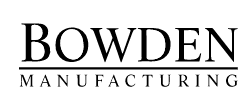Managing Your Supply Chain for Success
Part 4 of 10
We continue our Managing Your Supply Chain Series and our next topic is Connecting the right people on your Team with the right people from your Vendor.
There are many levels of people who have different information for you and your Team when dealing with your Vendor. How do you make sure you and your Team are connecting with the right people?
Since we are both a Vendor to some companies and a Customer to others, we deal with both sides of this Communication equation.
This week, we’ll consider three questions for you to consider around the contact you make with your Vendors:
1. Does the main contact at your Vendor know the status of your orders?
Ideally, your main contact at your Vendor knows what’s going on and is feeding information to you proactively. If they don’t do it alone and get help from others in their organization, that’s fine as long as you are kept informed.
However, when your Customer (or your Boss!) calls you for an update on the project, it can be important to get a timely status report from your Vendor. If your main Vendor contact needs help from inside their organization, that could take more time than you’d like.
In a situation when time is of the essence, it helps to establish a deadline for the Vendor’s response. Make sure your Vendor contact agrees on the latest time “it’s acceptable to get back to you.” It may be that same day or the next day, but it should be established in advance. Even if their best answer at the set deadline is just “I’m still waiting for more information,” at least you know they’re working on it. Radio silence is extremely frustrating and doesn’t build confidence in your Vendor. It also makes for very uncomfortable conversations with your Customer (or your Boss!).
2. Do your Teammates interact with their counterparts at your Vendors?
Typically, the member of your Team that did the purchasing from your Vendor will establish a relationship with the Vendor’s Customer Service contact. That connection is routinely the baseline for information flow between the two companies.
Many times, establishing contact between your other departments and their counterparts at your Vendors provides important additional value to the relationship. Two significant examples are the Quality and the Engineering Departments.
Quality – Your Quality Department is going to determine whether your Vendor’s products are acceptable or not. How your Team will make that determination is important information that should be shared with your Vendor. Often, there is a drawing and/or list of specifications to be met (perhaps including some critical features), but the drawings rarely tell the full story. Making sure your Quality Department establishes a relationship with your Vendor’s Quality Department can save a tremendous amount of time and frustration, so set proper expectations early. It would be preferable for your Vendor to use the same means your Team will use to determine if they have satisfied your Team’s requirements. To make that happen, you need to make sure those counterparts are connected.
Engineering – Your Engineering Team understands how your Vendor’s products relate to the rest of the project. Having a drawing/specification review to ensure key aspects of the Vendor requirements are clear, can save a tremendous amount of time and frustration. Additionally, it’s possible your Vendor’s Engineering Team may have a different perspective on how they will meet the requirements. Their relationship with your Engineering Team could yield additional design improvements. The only way those types of conversations happen is if those counterparts are connected.
Establishing Contact – Early in a Customer-Vendor relationship, it’s rare that these additional counterpart interactions get started as part of the onboarding. Usually, they only begin when something goes wrong! Much better to reach out proactively to your Vendor to get things set up without the time pressure of dealing with a mistake. Vendor performance can be challenging enough when they fully understand what’s required of them. Even when there are solid relationships, it doesn’t guarantee that things will go smoothly, but the odds improve. The better your relationships with your Vendors, the more value your Vendors bring. These days, setting up a video call is so commonplace that if you initiate a meeting/call, you should be able to establish those counterpart relationships early on.
3. Does your company have weekly internal planning meetings or weekly calls with your Customers?
Most manufacturing companies have regular planning sessions, often weekly. These sessions are a key rhythm of an operational cycle that keeps things moving forward. Also, many times there will be regular update calls with your Customers.
Timely input from Vendors will help make both internal and external meetings more productive. Make sure you let your Vendors know your most valuable times to get updates from them. If you give Vendors your most important times for an update during a typical week (i.e. just prior to key meetings), then they can get into your rhythm, and you will have the most current information when you need it most.
You may need to build a system to prompt your Vendor the day prior to, or even morning of, your meetings, but giving them the best opportunity to support you in a timely fashion will help keep you in the know at the most opportune times.
Final Thoughts
Having your Team connect with the right people at your Vendor can ensure you get the information you need to be successful! Hopefully, these questions helped you think about the various counterparts you have at your Vendors and how they can help you achieve your goals.
Interacting with more than just their Customer Service contact will prove to be a plus when dealing with your Vendors.
In part 5 of our Managing your Supply Chain for Success Series, we’ll be talking about the Quality systems of your Vendors and how you can make sure they are established and functioning to meet your needs.

